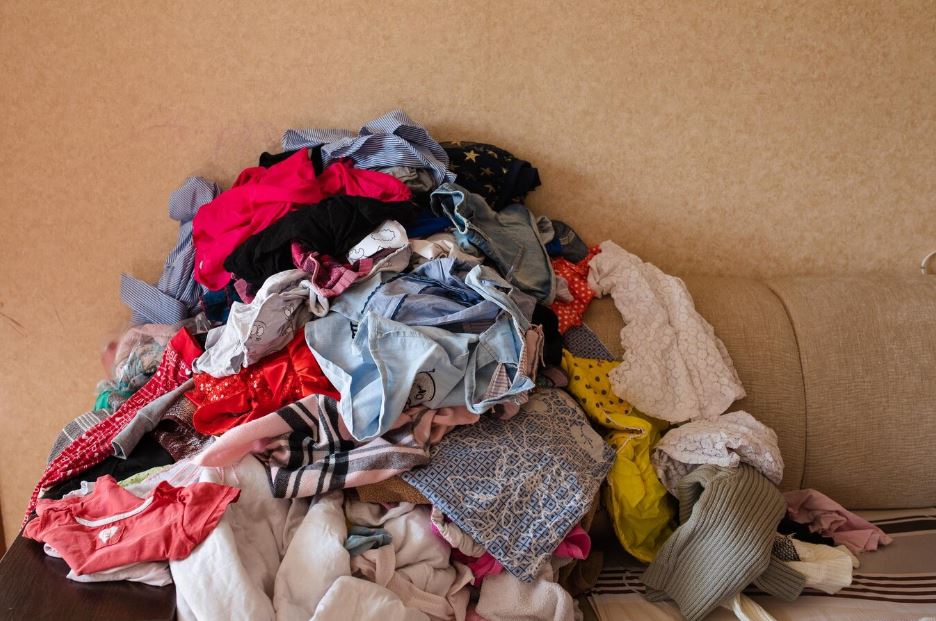
A bag of ripped socks and old T-shirts ends up in a green textile recycling bin outside a nearby supermarket on a rainy morning in Manchester. What was once waste is now extraordinarily valuable. Once written off as specialized or inconvenient, recycling textiles and apparel is having a significant impact on both environmental policy and fashion in the future. Reusing old clothing has become especially advantageous for the environment and those attempting to live more sustainably.
Large retailers’ sustainability profiles have significantly improved over the last ten years. For example, hundreds of H&M stores have in-store clothing recycling stations. When customers bring in their used clothing, regardless of brand, they receive a discount voucher. By promoting this behavior, the business has successfully created a cycle in which clients buy and discard with intention. Fashion retailers are subtly changing their influence with strategic initiatives like this.
Key Details About Recycling Clothing and Textiles
| Category | Information |
|---|---|
| Subject | Recycling of clothing and textile materials |
| Primary Methods | Donation, resale, mechanical processing, chemical recycling |
| Common Outcomes | New clothing, insulation, industrial cloths, stuffing for furniture or car interiors |
| Participating Brands | H&M, Primark, Patagonia, The North Face, Levi’s |
| Environmental Benefits | Less landfill waste, reduced emissions, limited water and dye use |
| Economic Value | Job creation, reuse markets, reduced municipal disposal costs |
| Challenges | Mixed fibers, contamination, logistics of collection and sorting |
| Technological Advances | AI-based sorting, fiber regeneration, smart tagging |
| Current Regulatory Push | EU Circular Textiles Strategy (targets by 2030 for full recyclability) |
Businesses are turning used clothing into reusable raw materials by utilizing technologies like chemical fiber recovery and mechanical shredding. For natural fibers like cotton, mechanical techniques are very effective, even though the fibers do deteriorate with time. By combining recycled materials with trace amounts of virgin fiber, this restriction is being addressed and new products that feel fresh without starting from scratch are being produced. Contrarily, chemical recycling is especially inventive since it makes it possible to decompose synthetic materials like polyester into their component parts and reassemble them with strength that is almost identical to what was originally present.
Smaller startups with incredibly successful ideas have entered the market in recent months. Ecoalf, a Spanish company that makes jackets and bags out of marine trash like plastic bottles and abandoned fishing nets, is one notable example. Their mission is sincere, their designs are sleek, and their model demonstrates that sustainable fashion can be both stylish and profitable. Younger consumers, who increasingly demand accountability and transparency from the brands they support, can relate to their story.
The popularity of second-hand marketplaces skyrocketed during the pandemic. Millions of people downloaded apps like Vinted and Depop in search of entertainment, extra cash, or a sense of control over their closets. Online secondhand clothing purchases evolved from a fad to a statement. These platforms have been especially instructive for early-stage shoppers learning to control impulse buys. They illustrate how reselling can be advantageous for the economy and the environment.
Recycling facilities are also changing by incorporating AI-powered sorting systems and smarter logistics. In order to streamline operations and free up human talent for more complex tasks, startups throughout Europe are developing sensor-based technology that can identify fibers by feel and color. Sorting facilities are now able to process more textiles with greater accuracy thanks to this innovation, which has drastically decreased labor intensity and error.
Recycling textiles has evolved from a good idea to a moral requirement in light of the urgency of the climate crisis. The Ellen MacArthur Foundation estimates that the fashion industry contributes approximately 10% of the world’s carbon emissions, which is more than the combined effects of international travel and maritime shipping. The fact that more than 90 million tonnes of textile waste are produced annually, the majority of which is buried or burned, makes that number even more alarming. Recycling helps us preserve limited resources like energy, water, and land in addition to reducing emissions.
Public-private partnerships centered on textile sustainability have steadily increased since the introduction of the EU’s Circular Textiles Strategy. Brands are modernizing their supply chains, governments are investing in infrastructure, and consumers are receiving education on the composition, handling, and disposal of fiber. When shared with logistics partners and bolstered by tax incentives, this transition is surprisingly affordable for medium-sized retailers.
Several fashion brands have started experimenting with biodegradable threads and recyclable zippers—tiny details that previously prevented large-scale textile reuse—by working with universities and research centers. As these developments advance, they will facilitate clothing disassembly at the end of life, lowering contamination and increasing material recovery rates. Pilot projects like the Swedish Recycling Park in Malmö, where used clothing is tracked, sorted, and reborn using circular systems, are a prime example of this incremental progress.
Recycling clothing for individuals no longer entails simply placing items in an opaque donation bin and crossing their fingers. Nowadays, more companies provide transparency, letting customers know exactly where their used clothing ends up. Some even give consumers tracking numbers so they can follow the development of their recycled T-shirt into a new product. A layer of trust is added by this visibility, which motivates more people to act with purpose rather than guilt.
